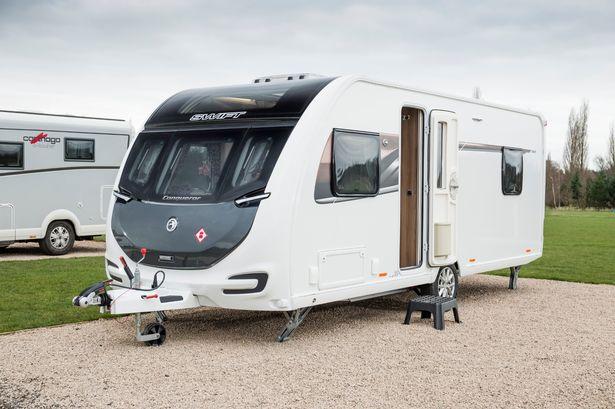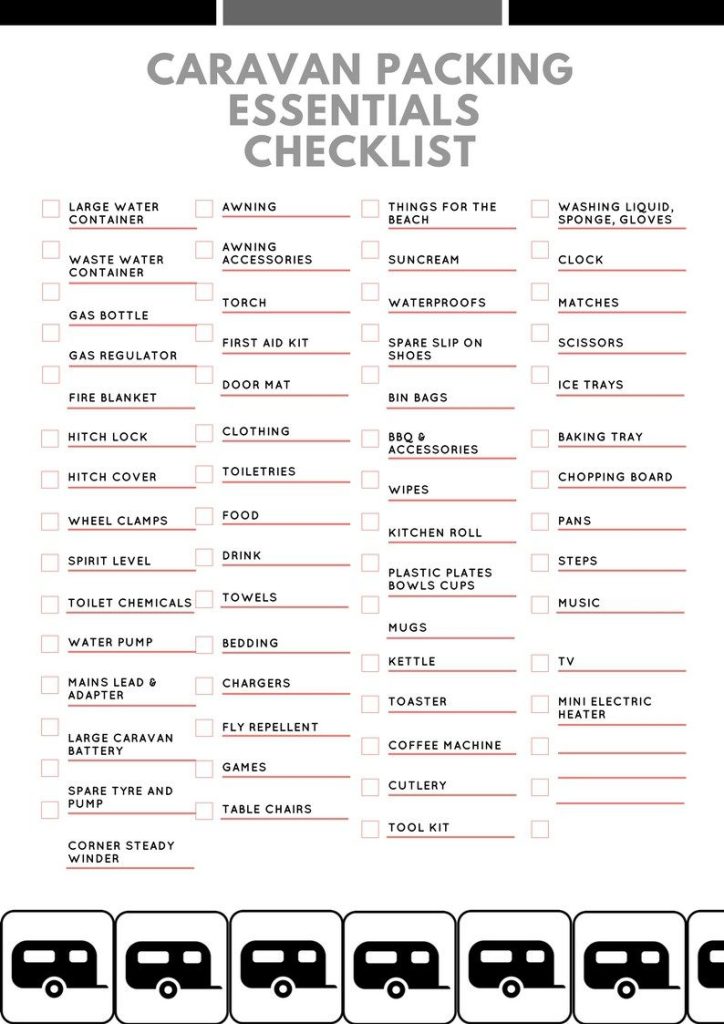There are many reasons why you might want to buy a used caravan – with the most apparent being budget. Not everyone can afford to buy brand new and my personal opinion is that you shouldn’t!
In fact, my advice would be to spend as little as possible on your first caravan just in case you decide that it’s not for you.
So today I share some tips on how to buy a used caravan, so you can avoid any serious issues.
Our 1st caravan was bought second-hand, as was the second – and both were bought privately – BUT we knew what we were looking out for!
I’ve always said that even if I had the cash to buy a brand new model – I wouldn’t and a perfect example of why is when my in-laws bought a brand new Bailey Unicorn Cartagena two years back.
Yes, it’s stunning, and yes it’s ultra-modern and gorgeous, but my god have they had their problems with it!
They have had to take the van back to the dealer (at their own cost) no less than 4 times so far, and only two weeks ago when we were having ours serviced, they asked the engineer to perform a quick damp check on theirs only to find that the middle section floor was 70% damp!
It was heartbreaking for them and will be yet another inconvenience as they will have to tow the van back off their new seasonal pitch to get it in for repair AGAIN!
So, that’s my first reason for buying used – any snagging or serious issues will most likely have been repaired under warranty, so you won’t have the headache of towing back and forth to the dealer for repairs.
Second, is that, as you have probably found – there are a huge variety of layouts and specs available when buying used, so it shouldn’t be difficult for you to find one you love!
A great place to start researching layouts is Caravan Finder. You can explore the various layouts and then click through to caravans in that layout currently available for sale. Some will be private sales and some are via dealers.
Another great place to check is Auto Trader as they usually have great interior photos and a great search filter. I’m usually on there on a Sunday fawning over the gorgeous vans for sale!
What Year of Caravan Should I be Looking at?
They say caravans have a life of around 14 years if they’ve been looked after properly, but I’ve seen many much older caravans in perfect working order so it all depends on the specification and layout you are after.
The obvious advice would be to buy as new as possible within your budget.
You can usually find out the age of the caravan by looking at the serial number which will be found on the chassis or chassis plate.
If the plate isn’t in place, then check out the caravan’s handbook – just make sure it’s the right book for the model.

When is the Best Time to Buy a Used Caravan?
If you’re buying from a dealer Christmas and New Year can be a great time to look for a used caravan as this tends to be a ‘dead’ period for the dealer.
January to march is also a great time to start looking as they will be trying to clear their second-hand stock before the new models come in.
If you’re buying privately, it’s usually a good idea to start looking around September time towards the end of the season, as owners start to think about upgrading or selling up.
How to Check if a Used Caravan Has Been Stolen
There are a few things you can do to check whether or not the caravan might have been stolen.
- Have a good look around for any damage around the hitch, and on the wheel rims and tyres as this could mean that any security locks have been removed by force.
- Ask the seller or dealer for any receipts or documents relating to the ownership of the van.
- Twin axle caravans are especially vulnerable to theft, so be suspicious of any being sold cheaply. Also, be cautious if you view the caravan away from the seller’s premises – particularly if it’s stored in a compound.
CRiS Registration
A CRiS check can identify whether a caravan has been reported stolen but it can also give the age of new and models of caravans it can also tell you whether there is any outstanding HP or finance.
Unfortunately, this service is only available on post-1992 caravans, so make sure that the seller can provide enough evidence that they are a legitimate owner.
You can usually find the CRriS registration number etched on the window of the caravan.
It’s also worth noting that some insurers will not cover you without the CRiS number of the caravan.
Should I Buy Privately or Through a Dealer?
Well, both times I have bought privately without issue, but we had a pretty good idea of what we were looking out for, which I’ll cover further down this post.
The most obvious benefit of buying through a dealer is the warranty. Usually, dealers will offer a 3 or 6-month warranty on used caravans so you always have a come-back if there are any issues.
If the dealer doesn’t offer a warranty, then try to negotiate one as part of the sale. If they won’t, then walk away, as this could indicate an issue with the van.
Dealers tend to be more expensive than buying private – so try to squeeze as much out of them as you can by asking them to include a caravan starter kit – this typically includes a water barrel, wastemaster and electric cable.
If you’ve decided to go with a dealer make sure that all the paperwork is in order, including the most recent inspection to include a damp/habitation report and roadworthiness – remember, when you take the caravan off the forecourt it becomes your legal responsibility!
It’s also worth checking out reviews about the dealer online and paying close attention to the after-sales support.
Buying a Used Caravan Privately
The biggest benefit to buying privately is the cost. Private sellers obviously don’t have the same overheads as dealers so you could pick up a great bargain.
This does mean that you will have to carry out some more research and checks on the caravan that you’re thinking about buying.
Make sure to ask about any documentation in place proving ownership and its service history.
If there is no service history in place you should arrange for a service to be carried out before you take it on the road. This will typically cost around £160. Only get this done once you are certain you want to buy.
It’s a good idea to take a friend with you who has some knowledge of caravanning as they will have a better idea of what to look out for.
Just remember – if it all seems too good to be true, then it usually is!
How to Carry Out an Inspection on a Used Caravan When Buying Privately
So you’ve done your research on the caravan layout and model you’re interested in. You’ve found someone selling it within your budget, so what’s next?
You are going to have to do some thorough checks to ensure you are not buying a load of old rubbish.
We have a FREE checklist you can print off and use to tick off as you do your checks to ensure everything is in order.
Click the button below to get it now!
Things to check:
The first thing you want to do is make sure that it’s structurally sound and not suffering from any kind of damp.
Externally:
- Have a wander all around the outside of the caravan and check around the wheel arches, trims and the A-frame.
- Check that the Hitch and the handbrake look like they have been well maintained and that the breakaway cable is in place and in good order ( look for signs of fraying).
- Try to push the hitch Towards the back of the van – you should feel some resistance If it’s working properly.
- Are there any cracks or signs of damage? How do the wheels look? Are there any cracks in the Walls?
- Also, check the tread and ask the seller when they were last replaced. Ideally, caravan tyres should be changed every 5 years.
- Does the sealant appear to be intact? If possible, take some step ladders and have a scan across the roof looking for any signs of damage.
- Don’t forget the underneath of the caravan – check for any signs of rust or damage.
- Also, remember to check the windows and external seals and that they appear to be in good order.
Signs of general wear and tear are to be expected, but if the caravan doesn’t look well cared for or has been neglected for a long time, I’d take it as a sign to stay away.
You Might Be Interested In:
How To Spot And Deal With Damp in a Caravan
Interior:
Damp is a caravan’s biggest enemy, so it’s important to check that there are no signs of ingress anywhere in the caravan.
This is really important – so take your time and don’t be rushed by the seller.
The first thing you need to do is grab yourself a damp meter. They can be bought for as little as 20 quid from Amazon. The one listed below is one we use and was recommended to us by our service engineer. It’s expensive but it will see you right for years to come.
Protimeter Mini General Purpose Moisture Meter

- Easy to use, precision moisture meter with built-in pin probes, designed for general purpose moisture measuring
- Clear and simple colour-coded LED display
- Display shows moisture content and classification, dry (green), borderline (yellow), or damp (red)
- Includes calibration device for checking correct functionality of instrument
- Supplied with extension pin probe, allowing use in awkward positions
My post here will explain what the readings mean, and give you some more info on damp.
- Open up the cupboards and lift up the sofas and mattress.
- Check the walls and floor in all these areas for signs of any water damage. Give it a firm press – if it feels spongy then there’s a strong possibility of damp. If there are old water stains, but the wall feels solid ask the seller about any damp repair work that has been carried out.
- Have a good sniff around. If it smells mouldy or musty then there’s a good chance that damp is present in the caravan.
- Bounce up and down the caravan – how does the floor feel?
- if it feels spongy then there is a strong chance of delamination.
- Check that all the door hinges and catches are in good working order.
- Check that the windows open properly and that there are no signs of ingress around the sills
- Check that taps and electrics are all in good working order, as well as the battery.
Final Words
The best second-hand caravans are ones that have been truly loved and looked after by their owners. You can usually get a feel for this when they tell you more about it and how they’ve used it over the years.
Just because it’s not the most modern, or the nicest looking caravan out there doesn’t mean you should pass it off. If it’s solid, damp free and within your price range then go for it!
Happy Caravanning x

